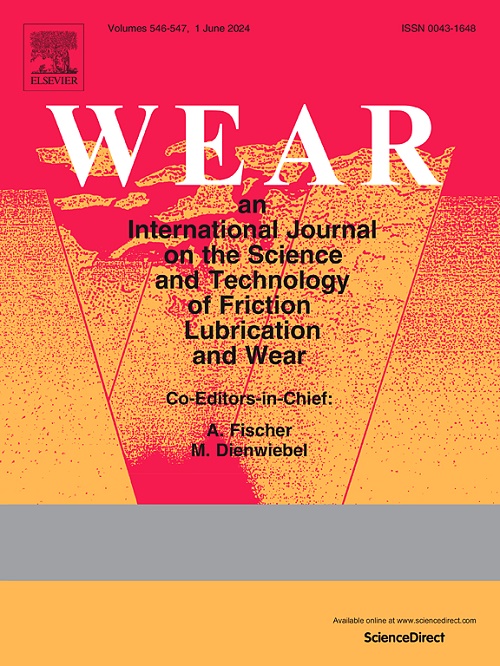The polishing surface quality of single crystal diamond with GO green-enhanced diamond hybrid slurry and material removal mechanism analysis
IF 5.3
1区 工程技术
Q1 ENGINEERING, MECHANICAL
引用次数: 0
Abstract
Single crystal diamonds, which have extremely high hardness and brittleness, can provide lower power consumption and higher frequencies for electronic devices compared with other semiconductor materials. The chemical mechanical polishing method is usually used to realize the flattening of single crystal diamond workpiece. However, the conventional oxidants may cause damage to polishing tools and experimental equipment, and even lead to environmental pollution. Therefore, a graphene oxide green-enhanced diamond hybrid slurry was introduced in this study for single crystal diamond polishing with quartz glass as a polishing disk. The effect of graphene oxide on polishing surface quality was analyzed, and the polishing experiments were carried out with different polishing pressures and durations to investigate the influence of varying process parameters. The molecular dynamics method was used to simulate the formation and removal process of graphene oxide-induced degraded layer on single crystal diamond surface. The scratched morphologies on single crystal diamond surfaces were obtained, and the amorphization degree was analyzed to reveal the subsurface damage mechanism. The simulation shows that the oxygen-containing functional groups from graphene oxide chemically react with the carbon atoms on the single crystal diamond surface, removing in the form of CO, CO2, or adhering to the abrasive grains. Also, the chemical adsorption reduced the activation energy of carbon atoms in single crystal diamond, and made it more loosely arranged and easier to be removed by mechanical scratching, which explained the experimental results.
氧化石墨烯绿色增强金刚石混合浆料抛光单晶金刚石表面质量及材料去除机理分析
单晶金刚石具有极高的硬度和脆性,与其他半导体材料相比,可以为电子器件提供更低的功耗和更高的频率。通常采用化学机械抛光方法来实现单晶金刚石工件的平整。然而,常规氧化剂可能会对抛光工具和实验设备造成损坏,甚至导致环境污染。因此,本研究引入了一种氧化石墨烯绿色增强金刚石杂化浆料,以石英玻璃为抛光盘,用于单晶金刚石抛光。分析了氧化石墨烯对抛光表面质量的影响,并在不同的抛光压力和时间下进行了抛光实验,研究了不同工艺参数对抛光表面质量的影响。采用分子动力学方法模拟了单晶金刚石表面氧化石墨烯诱导降解层的形成和去除过程。获得单晶金刚石表面的划伤形貌,分析其非晶化程度,揭示其亚表面损伤机理。模拟结果表明,氧化石墨烯中的含氧官能团与单晶金刚石表面的碳原子发生化学反应,以CO、CO2的形式去除,或附着在磨粒上。同时,化学吸附降低了单晶金刚石中碳原子的活化能,使其排列更加松散,更容易被机械刮擦去除,这也解释了实验结果。
本文章由计算机程序翻译,如有差异,请以英文原文为准。
求助全文
约1分钟内获得全文
求助全文
来源期刊

Wear
工程技术-材料科学:综合
CiteScore
8.80
自引率
8.00%
发文量
280
审稿时长
47 days
期刊介绍:
Wear journal is dedicated to the advancement of basic and applied knowledge concerning the nature of wear of materials. Broadly, topics of interest range from development of fundamental understanding of the mechanisms of wear to innovative solutions to practical engineering problems. Authors of experimental studies are expected to comment on the repeatability of the data, and whenever possible, conduct multiple measurements under similar testing conditions. Further, Wear embraces the highest standards of professional ethics, and the detection of matching content, either in written or graphical form, from other publications by the current authors or by others, may result in rejection.
 求助内容:
求助内容: 应助结果提醒方式:
应助结果提醒方式:


